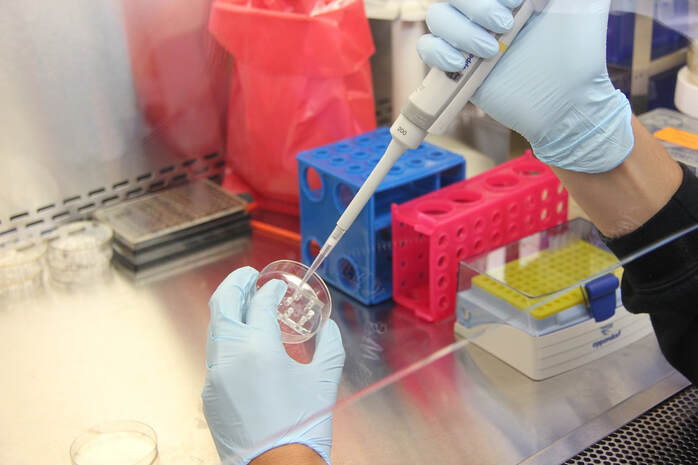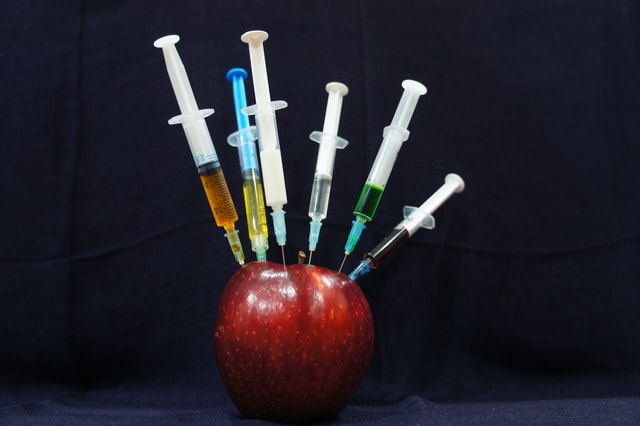New Insights in the Potential of Liposome-CRISPR Technology
You may have heard the excitement around CRISPR in the science world and may be wondering— what is it? ‘CRISPR’ stands for Clustered Regularly Interspaced Short Palindromic Repeats. It is a genome editing tool that allows precise changes to DNA sequences, therefore correcting mutations and potentially treating various diseases. CRISPR/Cas9 technology is made up of two components: a Cas9 nuclease, functioning like molecular scissors that cleave DNA strands, and a guide RNA (gRNA), a series of nucleotides serving as a roadmap directing Cas9 where to cut. When Cas9 reaches the target gene, it creates a precise cut in DNA that activates the cell’s natural DNA repair machinery.
The UK recently approved CRISPR therapy to treat inherited blood disorders by modifying blood stem cells. Researchers have also explored a new CRISPR treatment using lipid nanoparticles for cystic fibrosis, showing gene-editing potential. CRISPR's progress indicates transformative treatments, highlighting its growing potential for life-changing therapies.
However, delivering CRISPR tools to the right spot is not easy. Cutting at the wrong site can have severe consequences. Currently, one way of delivering CRISPR parts is through making temporary pores in cell membranes to get parts into the cell. Another method involves the use of safe and modified viruses as vehicles used in gene therapy to transfer DNA or RNA into cells.
The UK recently approved CRISPR therapy to treat inherited blood disorders by modifying blood stem cells. Researchers have also explored a new CRISPR treatment using lipid nanoparticles for cystic fibrosis, showing gene-editing potential. CRISPR's progress indicates transformative treatments, highlighting its growing potential for life-changing therapies.
However, delivering CRISPR tools to the right spot is not easy. Cutting at the wrong site can have severe consequences. Currently, one way of delivering CRISPR parts is through making temporary pores in cell membranes to get parts into the cell. Another method involves the use of safe and modified viruses as vehicles used in gene therapy to transfer DNA or RNA into cells.
Image Source: mwooten
In a recent study published in the International Journal of Molecular Sciences, researchers explored the use of liposomes as vehicles to carry CRISPR parts into cells. Liposomes are tiny sacs composed of two layers of fat molecules, and have parts that love water (hydrophilic) and parts that dislike it (hydrophobic). For this reason, they’re able to trap and carry cargo, such as CRISPR parts. Liposomes are taken up by small compartments within cells, where it is important for the parts to be released effectively for it to reach the right cells. Used for about 50 years, they’ve played a significant role in gene therapy and drug delivery due to their ideal structure and properties, making them promising carriers for delivery.
The study showed how liposomes can be modified in various ways that optimize delivery in terms of how stable they are, how they release the CRISPR parts, and how they connect with target cells. One way involves adding molecules that act like keys, which are special tags that can bind to specific locks on target cells. Another way is to design liposomes that can sense and react to specific signals such as changes in acidity level that help release cargo. These specialized liposomes have been tested in mice, demonstrating improved gene editing that minimizes off-target effects. Even more precise cuts can be made in just one DNA base pair, known as base editing.
While liposome-based CRISPR editing holds promise, challenges remain before its use in medicine. One issue is the immune system's response, which may reject the carriers, hindering targeted delivery. Activation of immune cells might trigger inflammation. Moreover, accessing specific body areas, like the blood-brain barrier or dense regions, proves challenging for liposomes. Overcoming these hurdles is crucial to develop a safe and efficient liposome-based CRISPR delivery system for medical applications.
CRISPR technology, when paired with liposome-based drug delivery, offers a powerful method to precisely target cells and potentially transform disease treatment. Scientists are still working to make liposomes better with CRISPR, aiming to develop safe and effective treatments for a wide range of diseases. CRISPR has been used in human clinical trials and studies in experimental treatments under very strict regulations assessing safety and efficacy before considering broader medical applications.
The study showed how liposomes can be modified in various ways that optimize delivery in terms of how stable they are, how they release the CRISPR parts, and how they connect with target cells. One way involves adding molecules that act like keys, which are special tags that can bind to specific locks on target cells. Another way is to design liposomes that can sense and react to specific signals such as changes in acidity level that help release cargo. These specialized liposomes have been tested in mice, demonstrating improved gene editing that minimizes off-target effects. Even more precise cuts can be made in just one DNA base pair, known as base editing.
While liposome-based CRISPR editing holds promise, challenges remain before its use in medicine. One issue is the immune system's response, which may reject the carriers, hindering targeted delivery. Activation of immune cells might trigger inflammation. Moreover, accessing specific body areas, like the blood-brain barrier or dense regions, proves challenging for liposomes. Overcoming these hurdles is crucial to develop a safe and efficient liposome-based CRISPR delivery system for medical applications.
CRISPR technology, when paired with liposome-based drug delivery, offers a powerful method to precisely target cells and potentially transform disease treatment. Scientists are still working to make liposomes better with CRISPR, aiming to develop safe and effective treatments for a wide range of diseases. CRISPR has been used in human clinical trials and studies in experimental treatments under very strict regulations assessing safety and efficacy before considering broader medical applications.
Featured Image Source: Victoria
RELATED ARTICLES
|
Vertical Divider
|
Vertical Divider
|
Vertical Divider
|






